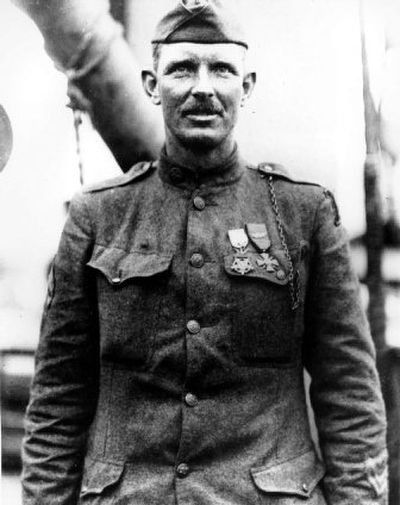Buried cartridges may mark site of Sgt. York’s exploits

PARIS – Nineteen .45-caliber cartridges buried in northeastern France may mark the spot where Sgt. Alvin York became America’s most celebrated soldier of World War I, a research team said Thursday.
The Sergeant York Discovery Expedition said that after four years of work, it found the cartridges buried 2 to 4 inches in soil near the village of Chatel-Chehery where York single-handedly took out a nest of German machine guns.
But last March, a group led by academics from York’s home state of Tennessee said they were “80 percent sure” they had found the spot where York carried out his heroic deeds – a location different from that announced Thursday.
The most recent group to claim they found the “York spot” said the presence of the cartridges – which the earlier group had not found – was the “final piece of the puzzle” needed to identify the spot with “100 percent certainty,” the group said in a statement.
It cited American military documents stating that York had fired at least 21 .45-caliber rounds with an automatic Colt pistol in his Oct. 8, 1918, assault on the German position.
“The battlefield archaeology confirms what we know about the York story,” the statement said, adding that it had unearthed the cartridges last weekend.
The group said it also discovered a host of other artifacts, including 250 German machine gun casings, at the site in the Argonne forest near France’s border with Belgium.
York, a member of the 82nd Division, was awarded the Medal of Honor for heroism for taking on the nest of 35 machine guns. York – at the time a corporal – captured 132 German soldiers and killed at least 20 others in the battle.
Gary Cooper starred in a 1941 movie about York, who died in 1964.
The research team’s leader, Lt. Col. Douglas Mastriano, said the film had inspired him to begin his search. For more than four years, the U.S. Army officer, who is stationed in Heidelberg, Germany, spent his free time trolling through German military archives and made about 40 trips to the battlefield.
“I was shocked to finally find the actual site,” Mastriano said, adding that it was “like finding a needle in a haystack.”
But Tom Nolan, a geographer at Middle Tennessee State University in Murfreesboro who led the team that said they thought they found the site in March, told the Associated Press Thursday that he isn’t certain Mastriano’s team found the spot.
“We don’t have enough evidence to reach any definite conclusion,” Nolan said. “I don’t see how anyone else could at this point.”
Nolan – whose research team is heading back to France for 10 days in early November – said that he would welcome any new findings and that he didn’t want the search for the York site to become a contentious issue.
“Our aim is to create some sort of permanent record of what is available and reach the most probable conclusion of where the events took place,” he said. “The truth will come out eventually.”